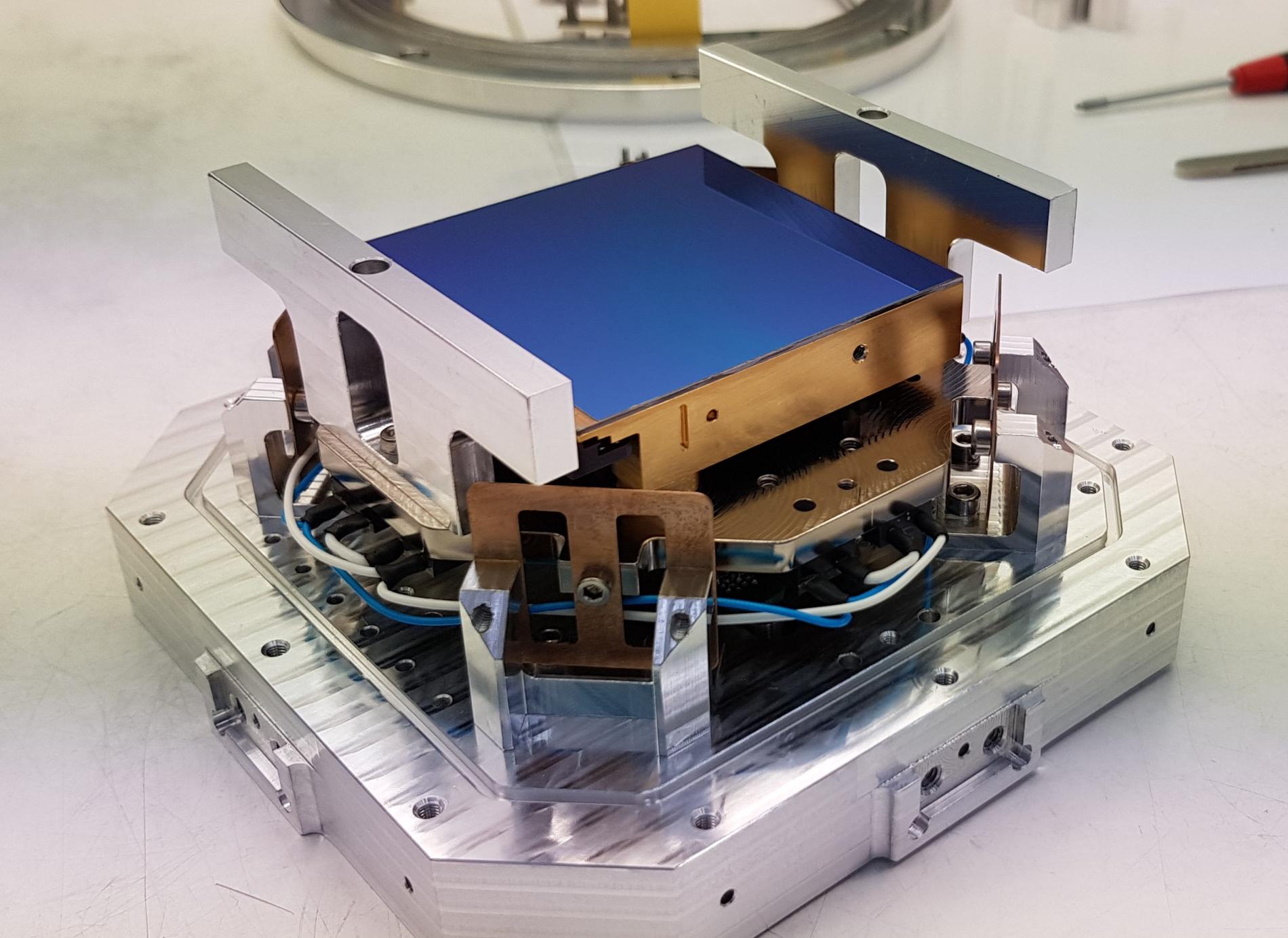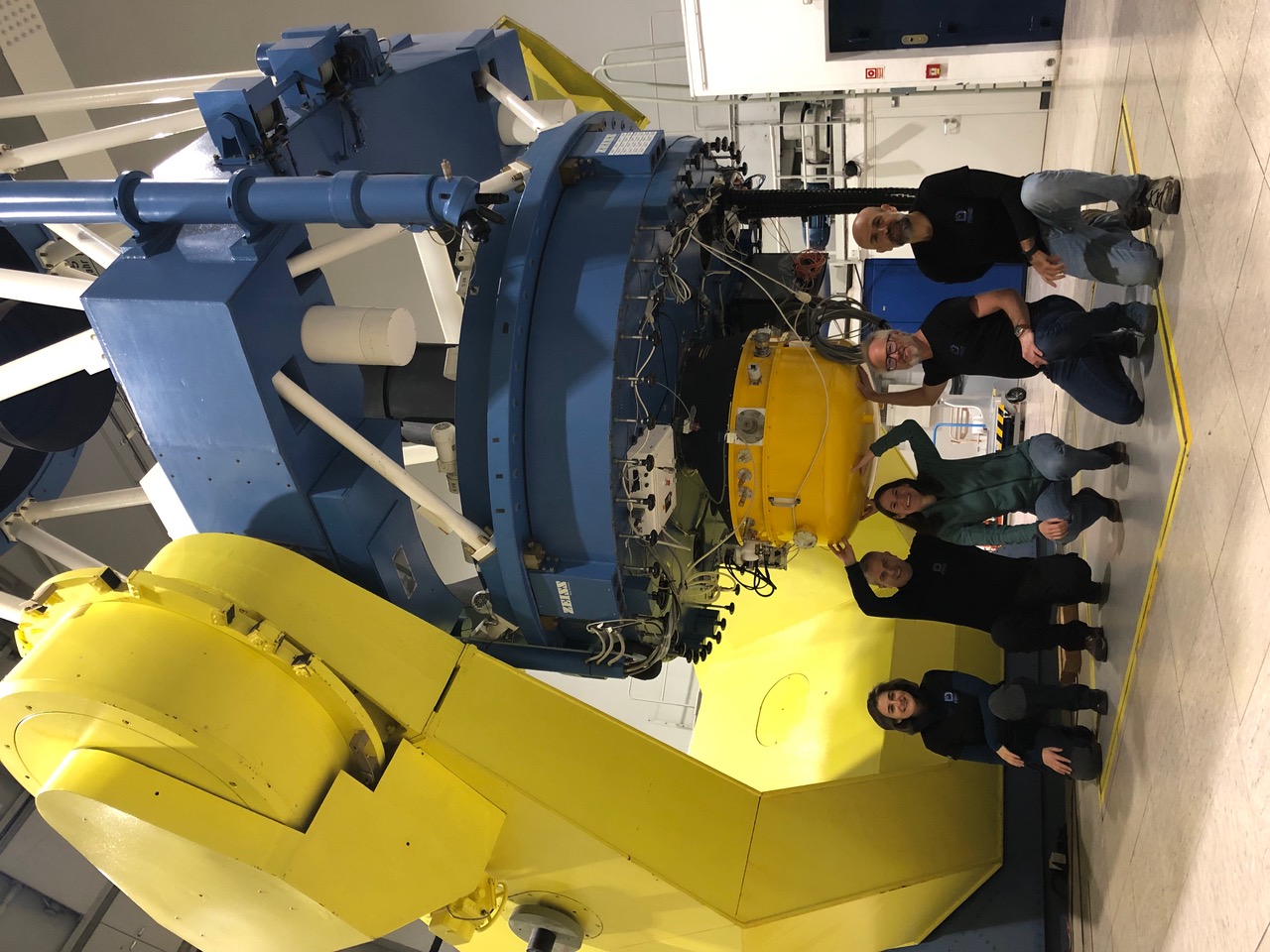PANIC, the first 4K infrared camera to explore the European sky
The Instituto de Astrofísica de Andalucía (IAA-CSIC), together with the Max-Planck-Institut für Astronomie (MPIA) in Heidelberg, Germany, has developed PANIC, a wide-field infrared camera for the 2.2-meter telescope at the Calar Alto Observatory in Almería, Spain
PANIC, which operates in the near-infrared wavelength range, will be capable of studying star clusters, galaxies, nebulae, stars, exoplanets, and even the smallest bodies in our Solar System
The human eye can perceive only a small fraction of the light in the universe, the visible spectrum, which spans wavelengths between 0.4 and 0.7 micrometers (billionths of a meter). By using detectors sensitive to light in the 0.8 to 2.5 micrometer range, we can access regions of the universe obscured by cosmic dust grains. Thanks to the development of PANIC (PAnoramic Near-Infrared Camera for Calar Alto), the first wide-field infrared camera for European telescopes, this is now possible. Observing in the near-infrared allows us to see through cosmic dust, making it possible to study optically invisible regions such as the center of our Galaxy—and other galaxies—or the dense clouds where stars and planets form. “Its wide field and built-in filters will benefit numerous scientific cases and new projects, ranging from extragalactic astronomy to Solar System studies,” explains Matilde Fernandez, IAA-CSIC researcher and principal investigator of the project.
The instrument will also facilitate the study of cold celestial bodies—objects with lower temperatures compared to other cosmic bodies—since most of the energy they emit lies in the infrared range. Examples of such objects include interstellar clouds, giant planets, planetary satellite surfaces, and asteroids.

Waning Moon of January 19, 2025, 26x9 arcminute sub-window. Credit: S. Muñoz-Torres and PANIC-4K Team
Starting in the second half of 2025, the Calar Alto Observatory will make this new camera available to its users for the 2.2-meter telescope. It will also be compatible with the 3.5-meter telescope, delivering excellent performance.
PANIC: INNOVATION AND ADVANCEMENT IN THE STUDY OF THE UNIVERSE
PANIC is not a new instrument at Calar Alto. Initially, it was designed with an array of four 2K infrared detectors, which, when combined, captured a large portion of the sky (31 x 31 arcminutes).
After achieving first light in November 2014, PANIC became operational for German and Spanish users, yielding excellent results. However, over time, two of its four 2K detectors began to degrade, affecting the scientific quality of the instrument. As a result, a decision was made to upgrade the detectors with higher-quality replacements. In August 2018, PANIC was sent to MPIA in Germany for refurbishment, where the old detectors were replaced with a state-of-the-art monolithic 4K (HAWAII-4RG™) sensor.

Customized mount of the integrated HAWAII-4RG™ monolithic detector. Credit: MPIA
The new detector has slightly smaller pixels than the original, which, to minimize optical impact and avoid design modifications, resulted in a slight reduction of its field of view by a few arcminutes. Despite this minor loss, PANIC still offers a wide field of view (26 x 26 arcminutes) in the near-infrared range, maintaining its status as an extremely powerful tool.
The Instituto de Astrofísica de Andalucía (IAA) has been responsible for adapting the necessary software to upgrade and enhance the instrument. This software has been developed to facilitate observation planning, interactive analysis of real-time captured images, and final data reduction.
“Optimal planning and automated execution of observations are essential in modern astronomical instrumentation,” explains José Miguel Ibáñez, IAA software engineer and PANIC software lead. “Since raw data, especially in the infrared, is not immediately suitable for scientific analysis, the ability to visualize and analyze pre-processed data almost instantly is crucial.” Furthermore, Ibáñez adds that “PANIC’s high-level software not only performs these functions but also carries out meticulous data reduction to extract maximum scientific value from the observations.”

Part of the PANIC-4K team at CAHA after successful installation of the instrument on the 2.2-m telescope. Credit: PANIC-4k team
The new team, known as PANIC-4K, consists of members from the original project along with new collaborators, all dedicated to completing the project and making it available to the scientific community in 2025. This achievement has been made possible thanks to the successful collaboration between CAHA, IAA-CSIC, and MPIA, enabling Calar Alto Observatory to provide not only a wide-field infrared camera for the Northern Hemisphere but also the necessary, efficient, and well-tested software tools for scientific work.
Observations with PANIC will offer the national and international astronomical community the opportunity to conduct innovative and original scientific projects.
- Instrument website: https://www.caha.es/panic
- Matilde Fernández - matilde@iaa.es
- Instituto de Astrofísica de Andalucía (IAA-CSIC)
- Unidad de Divulgación y Comunicación
- Amanda López – alm@iaa.es
- Emilio García – garcia@iaa.es - 649 407 445 (vía whatssap)
- Celia Navas - navas@iaa.es
- https://www.iaa.csic.es
- https://divulgacion.iaa.csic.es

